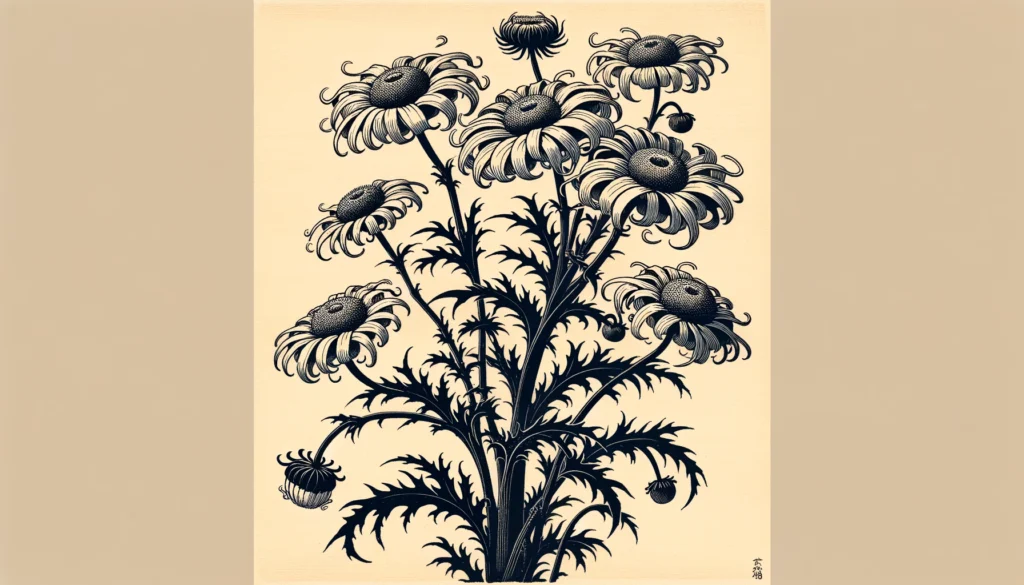

Home » Cat Plants » Is the Daisy Plant Harmful to Cats?

Daisy plants are a common wildflower found in many gardens, lawns and meadows. While these cheerful blooms may brighten up the landscape, they can unfortunately be toxic to cats. Daisies contain several compounds that are poisonous to felines, including sesquiterpene lactones and pyrethrins.
Ingesting any part of the daisy plant can lead to a range of unpleasant and potentially dangerous symptoms in cats.
Ingestion may cause mild gastrointestinal upset, but is generally not life-threatening.
Ingestion can result in mild symptoms like vomiting, diarrhea, or drooling. Rarely fatal but may require veterinary care.
Eating these plants can lead to more pronounced symptoms like abdominal pain, lethargy, or difficulty breathing. Veterinary intervention may be necessary.
Ingesting even small amounts can cause severe symptoms like organ damage, seizures, or cardiac failure without rapid treatment.
All parts of these plants are extremely poisonous to cats and can quickly lead to death, even with immediate veterinary care.
** Please note: Please note that toxicity level can vary based on the amount ingested and the specific cat. It's always best to keep these plants completely inaccessible to cats and seek immediate veterinary care or call the poison hotline if you suspect your cat has ingested any part of a toxic plant.
If a cat ingests part of a daisy plant, they may begin to show symptoms within a few hours. Common signs of daisy poisoning include:
In more severe cases, ingesting a large amount of the toxins in daisies could potentially lead to breathing problems, seizures, or even death. Any symptoms of poisoning should be treated as an emergency.
If you suspect your cat has eaten daisies, it’s important to contact your veterinarian right away. To diagnose plant toxicity, your vet will likely:
Your vet can determine the best course of treatment based on the severity of the poisoning. With prompt care, most cats will make a full recovery.

A: Yes, cats can be allergic to Daisy. Symptoms of an allergic reaction may include itching, sneezing, and skin irritation.
A: Yes, Daisy is toxic to cats. Ingesting any part of this plant can cause symptoms such as vomiting, diarrhea, and drooling.
A: Symptoms of Daisy poisoning in cats include vomiting, diarrhea, excessive drooling, incoordination, and dermatitis. Immediate veterinary care is recommended if ingestion is suspected.
A: To prevent contact, ensure that Daisy is not present in your home or garden. Keep your cat indoors or monitor outdoor activities closely to avoid exposure.
A: If your cat ingests Daisy, contact your veterinarian immediately. Do not induce vomiting unless instructed by a veterinary professional. Immediate medical attention is necessary.
A: Yes, Daisies are commonly found in gardens and as ornamental plants. It is important to ensure this plant is kept out of reach of cats to prevent accidental ingestion.
Daisies have a long history dating back thousands of years. The name “daisy” comes from the Old English phrase “daes eage” meaning “day’s eye”, referring to how the petals open in the morning sun. In ancient Rome, daisies were used to treat wounds on the battlefield. The ancient Celts saw daisies as a sacred flower symbolizing innocence and purity.
During the Victorian era in the 1800s, daisies became a popular garden flower and were used to make daisy chains. Today, many different varieties of daisies are grown as ornamental plants around the world. However, pet owners should be aware of the risks they pose to curious cats.
Please note: The information shared in this post is for informational purposes only and should not be considered as veterinary medical advice.
🐾 A hilarious or heart-melting cat video
🐾 Our latest paws-on review of a cool cat toy